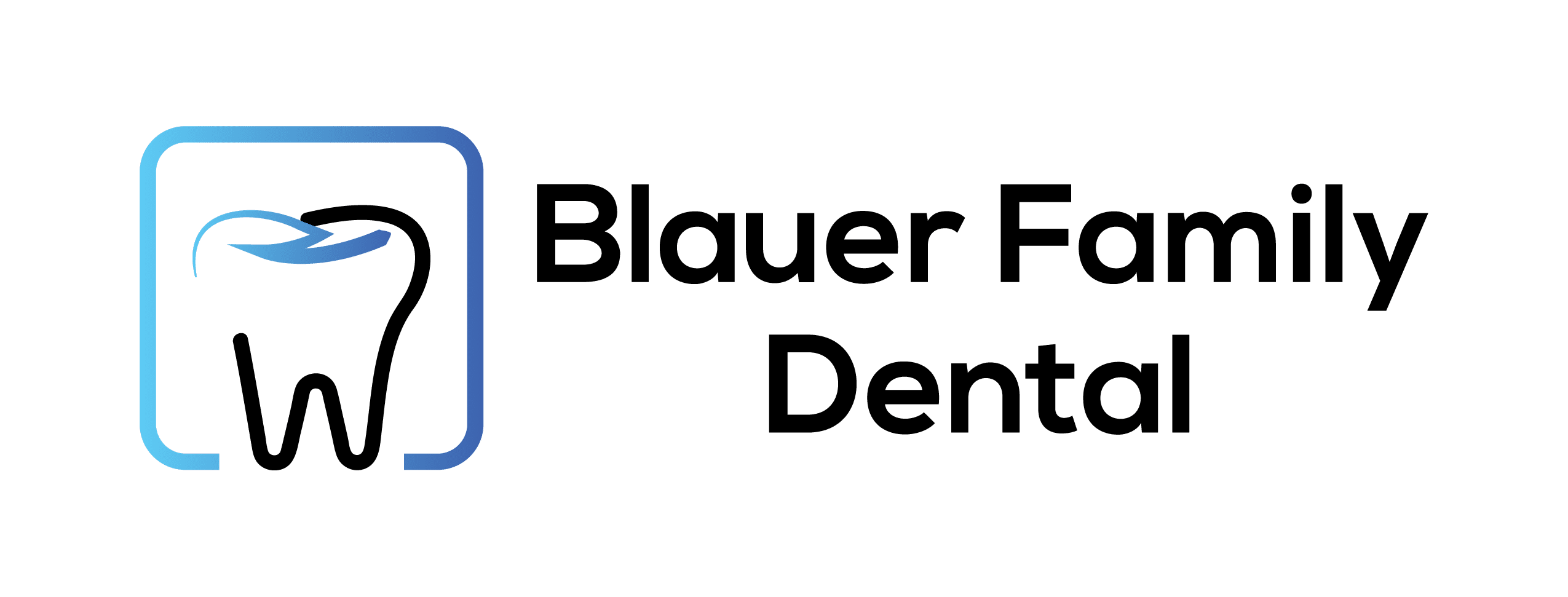“Can a tooth infection kill you?” This is a question that many people are surprised to even consider, especially when tooth pain is often brushed off as a temporary nuisance. But the reality is that a toothache caused by an infection isn’t just uncomfortable, it can be dangerous.
Dental infections, when left untreated, can spread beyond the tooth and gums, leading to serious health complications. In rare but documented cases, they can even become life-threatening.
Although it’s uncommon for a tooth infection to be fatal in today’s age of modern dentistry and antibiotics, the risk still exists, particularly if warning signs are ignored or the infection is allowed to progress without proper care.
Understanding how these infections develop, what symptoms to watch for, and why immediate dental treatment is crucial can make a significant difference in protecting both your oral and overall health.
What You’ll Learn in This Deep Dive
-
What exactly a tooth infection is and how it develops
-
Warning signs your tooth may be infected
-
How infections can spread and why they’re dangerous
-
Common myths about home remedies
-
The importance of professional treatment
-
How local family dentistry can help
What Is a Tooth Infection?
A tooth infection, commonly referred to as a dental abscess, is a localized collection of pus that forms as a result of bacterial invasion. These infections can occur inside the tooth, along the gumline, or in the surrounding bone structure, and they are typically painful, persistent, and potentially dangerous if left untreated.
The core issue lies in the body’s response to the bacteria: as your immune system attempts to isolate and destroy the invading pathogens, it creates an inflamed, pus-filled pocket.
Tooth infections often begin with a breach in the tooth’s protective enamel, such as an untreated cavity, cracked tooth, or advanced gum disease. Once bacteria reach the pulp—the innermost layer of the tooth containing nerves, blood vessels, and connective tissue—they multiply rapidly.
The infection causes inflammation, which builds pressure inside the tooth and leads to intense pain. This pain can be sharp, throbbing, or radiate to the jaw, ear, or neck.
There are three main types of dental abscesses, each affecting different parts of the mouth:
-
Periapical abscess – This type forms at the tip of a tooth’s root, usually as a result of deep tooth decay or trauma. It’s the most common type of tooth infection and often begins in the pulp before spreading downward.
-
Periodontal abscess – This occurs in the supporting bone and tissues of the teeth, often as a complication of untreated gum disease. It can develop rapidly and may cause significant swelling, gum recession, and bone damage if not addressed.
-
Gingival abscess – Located solely in the gum tissue, this type doesn’t typically affect the tooth or bone, but still causes painful inflammation. It may result from injury to the gums, such as a popcorn kernel or other food debris becoming lodged.
Each type of abscess is your body’s way of trying to contain a bacterial threat. However, the infection can spread beyond its original site if left untreated, making it critical to seek dental care as soon as symptoms arise.
The sooner a dentist can diagnose and treat the infection, the lower the risk of complications such as tooth loss or the spread of bacteria to other parts of the body.
How to Tell If Your Tooth Is Infected

Recognizing the symptoms of a dental infection early can prevent serious complications. Common signs of a tooth infection include:
-
Persistent, throbbing toothache
-
Swelling in the gums, face, or jaw
-
Sensitivity to hot or cold
-
Fever or chills
-
Bad breath or a foul taste in the mouth
-
Pain when chewing or biting
-
A visible pimple or bump on the gum
In some cases, the pain may subside even though the infection is still present, which can give a false sense of resolution. That’s why dental infections should never be ignored, even if symptoms improve temporarily.
Can a Tooth Infection Kill You? The Medical Risks of Ignoring It
While most dental infections are treatable, the answer to the question can a tooth infection kill you is, unfortunately, yes, though such outcomes are rare with timely care. Here’s how things can escalate:
When an infection isn’t treated, bacteria can spread from the infected tooth to surrounding tissues and then into the bloodstream. This can lead to serious conditions such as:
-
Cellulitis – a skin infection that can spread rapidly
-
Osteomyelitis – an infection of the bone surrounding the tooth
-
Ludwig’s angina – a severe infection in the floor of the mouth and neck, which can block the airway
-
Sepsis – a life-threatening immune response to infection that can result in organ failure
Reports exist of individuals dying from complications that began with an untreated tooth infection. In fact, modern antibiotics and access to dental care have drastically reduced the risk, but the danger still exists when infections are ignored or improperly treated.
How Can a Tooth Infection Kill You? A Closer Look
How can a tooth infection kill you? While it may sound dramatic, the threat is real in certain circumstances, especially when treatment is delayed or neglected.
The danger lies in the ability of oral bacteria to escape the confines of the mouth and enter the bloodstream or other vulnerable areas of the body. Once this occurs, the infection is no longer localized and becomes a systemic medical emergency.
Tooth infections begin with localized inflammation, but without treatment, the body’s defenses can be overwhelmed. As the bacteria continue to multiply, they may break through tissue barriers and spread to other parts of the head, neck, or even distant organs. This progression can lead to several life-threatening complications:
Brain Abscesses
A brain abscess is a pocket of infection that develops within brain tissue, usually due to bacteria traveling through the bloodstream from another infected site, such as a tooth.
The abscess causes swelling and pressure on the brain, leading to symptoms like severe headaches, confusion, visual changes, seizures, and loss of coordination. If not treated promptly, brain abscesses can cause irreversible neurological damage or death.
Endocarditis
Endocarditis is an infection of the inner lining of the heart chambers and valves. It can occur when bacteria from a dental abscess enter the bloodstream and attach to damaged areas of the heart.
This is especially dangerous for individuals with heart valve issues, congenital heart defects, or prosthetic heart valves. Endocarditis is difficult to treat and often requires long-term intravenous antibiotics or even heart surgery.
Sepsis and Septic Shock
Perhaps the most serious risk associated with untreated dental infections is sepsis, which is a systemic, inflammatory response to infection that can lead to widespread tissue damage, organ failure, and death.
When the immune system’s attempt to fight infection spirals out of control, blood pressure drops, organs may begin to shut down, and the patient may enter septic shock, a critical condition requiring immediate hospitalization.
Ludwig’s Angina
This is a particularly aggressive and potentially deadly cellulitis (skin infection) of the floor of the mouth and neck, often originating from a dental abscess. Swelling can spread rapidly, leading to difficulty swallowing, breathing problems, and airway obstruction. Without emergency intervention, Ludwig’s angina can suffocate a patient in a matter of hours.
Though such complications are rare in people who seek prompt dental care, they underscore the seriousness of dental infections. The mouth is not isolated from the rest of the body; what begins as a toothache can quickly turn into a full-body crisis. That’s why any signs of infection, especially fever, swelling, or fatigue, should never be dismissed as minor.
Why Home Remedies Are Not Enough

There’s a lot of online advice about how to manage a toothache at home, from saltwater rinses to clove oil and garlic. While these methods might temporarily relieve pain, they do nothing to remove the source of infection. Bacteria can multiply quickly and spread even while you’re masking symptoms.
Additionally, using antibiotics without dental supervision—whether leftovers from another illness or obtained without a prescription—is not only ineffective but dangerous. Improper use of antibiotics can cause resistance, making future infections harder to treat.
If you’re tempted to “wait it out” or self-diagnose, understand that this delay may turn a treatable issue into a medical emergency. Timely intervention by a dental office is always the safest route.
The Role of a Dentist in Treating Infections
Dentists are trained not only to recognize and treat dental infections, but also to prevent them from recurring or spreading. Their role goes beyond addressing pain, they focus on eliminating the infection, preserving as much of your natural tooth structure as possible, and helping you restore full oral function.
When you visit a dentist with signs of infection, the following treatment options may be considered:
-
Draining the abscess
In some cases, the dentist may create a small incision in the gum to release the buildup of pus and reduce pressure and swelling. This is often the first step to stabilize the area. -
Prescribing antibiotics
If the infection has spread or there is a risk of systemic involvement, antibiotics may be prescribed to help control the bacteria. However, antibiotics alone are not a cure—the source of the infection must still be addressed. -
Performing a root canal
When the infection is inside the tooth, a root canal procedure may be needed to remove the infected pulp, clean the canals, and seal the tooth to prevent reinfection. -
Extracting the tooth
If a tooth is severely damaged and cannot be saved, extraction is sometimes the only safe option. Dentists will also help plan for tooth replacement options like implants or bridges.
Beyond these core treatments, dentists may also:
-
Take diagnostic X-rays
X-rays help assess the extent of the infection and detect hidden abscesses, bone loss, or structural damage that isn’t visible to the naked eye. -
Educate patients about oral hygiene and prevention
Many infections can be avoided with better daily care. Dentists and hygienists provide personalized guidance on brushing, flossing, and diet to support gum and tooth health. -
Develop long-term care plans
After the infection is treated, your dentist may schedule follow-ups or recommend periodontal maintenance to monitor healing and prevent recurrence. -
Coordinate with other medical professionals
For patients with underlying conditions (such as diabetes or heart disease), dentists may collaborate with physicians to ensure the infection is managed safely and comprehensively. -
Offer sedation or anxiety management options
For patients who are fearful or anxious about dental treatment, many offices offer sedation options or other comfort measures to make urgent care less intimidating.
These services are part of a comprehensive approach that not only resolves current issues but also protects against future risks. A good dentist will help you stay healthy and informed in the long term.
Complications of Untreated Dental Infections
In addition to life-threatening complications, ignoring a dental infection can set off a chain reaction of health problems, some of which extend far beyond your mouth.
The longer the infection goes untreated, the greater the risk of severe, lasting damage. Here are some of the most common and concerning outcomes:
-
Chronic pain and swelling
Ongoing inflammation can make eating, talking, and even resting extremely uncomfortable. Pain may radiate to the jaw, ear, or neck, and become harder to manage over time. -
Tooth loss
When infection destroys the supporting structures of the tooth, extraction may become the only option. This can affect bite alignment and overall oral function. -
Jawbone damage (osteomyelitis)
Bacteria from a dental abscess can erode the jawbone, weakening the structural integrity of your mouth and complicating future dental procedures like implants. -
Sinus infections
Infections in upper teeth can spread to the maxillary sinuses, causing congestion, headaches, and facial pressure—a condition known as sinusitis of dental origin. -
Difficulty eating, sleeping, or speaking
Ongoing pain and swelling can affect your ability to chew food, sleep comfortably, or speak clearly, which can interfere with daily life and nutrition. -
High dental costs due to emergency care or surgery
The longer an infection is left untreated, the more complex and expensive the treatment becomes, especially if hospitalization or surgical intervention is needed. -
Spread of infection to surrounding tissues (cellulitis)
A dental infection can infiltrate soft tissue in the face and neck, causing redness, heat, and severe swelling. If the airway becomes compromised, emergency treatment is necessary. -
Weakened immune response
Chronic infections can place stress on the immune system, particularly in individuals with pre-existing health conditions, increasing the risk of secondary infections elsewhere in the body. -
Bite misalignment and TMJ issues
Losing teeth or dealing with prolonged swelling can lead to changes in how your jaw aligns and functions, sometimes contributing to temporomandibular joint (TMJ) disorders.
These aren’t just theoretical risks. They happen more often than many people realize, especially in those who delay care due to fear, cost, or misinformation. The good news is that nearly all of these complications are preventable with timely treatment and regular checkups.
Local, Accessible Help When You Need It
For residents near the Black Hills, finding prompt, compassionate care isn’t difficult. Practices that offer family dentistry in Sturgis provide both emergency and routine dental services to help you manage tooth infections and other urgent oral health needs.
The goal isn’t just to stop pain, it’s to prevent it from coming back. Regular checkups, professional cleanings, and staying alert to changes in your dental health can all reduce the likelihood of an infection taking hold.
Don’t Ignore the Signs
A dental infection should never be underestimated. Although rare, the answer to can a tooth infection kill you is yes, especially when symptoms are ignored or treated only with temporary home remedies.
Recognizing the warning signs, understanding the risks, and acting quickly can protect both your oral and overall health.
If you’re experiencing tooth pain, swelling, or other signs of infection, reach out to a dental office without delay. Your life could depend on it.
References
-
Mayo Clinic. “Tooth abscess.” https://www.mayoclinic.org
-
Cleveland Clinic. “Tooth Infections.” https://my.clevelandclinic.org
-
American Dental Association. “Oral Health Topics.” https://www.ada.org
-
Healthline. “Can a Tooth Infection Spread?” https://www.healthline.com
-
CDC. “Sepsis.” https://www.cdc.gov/sepsis
